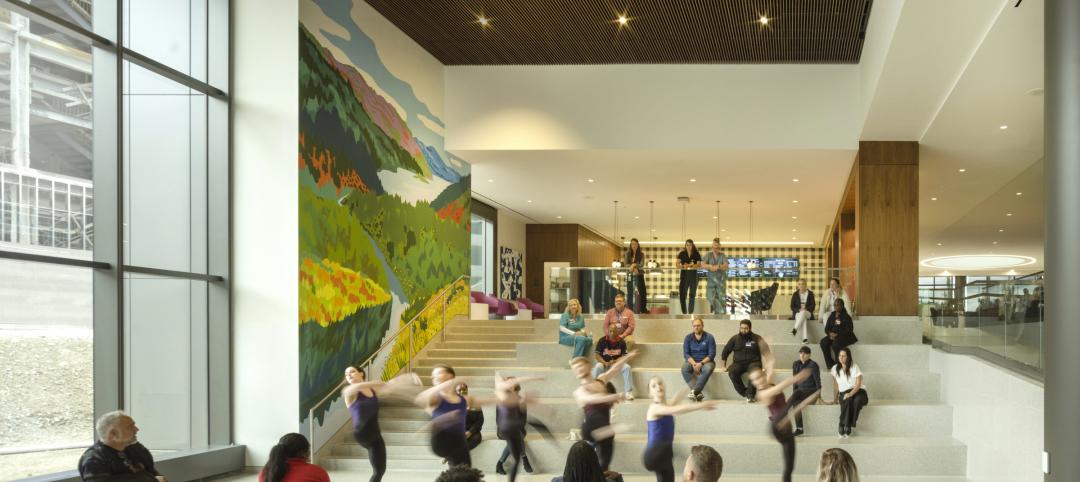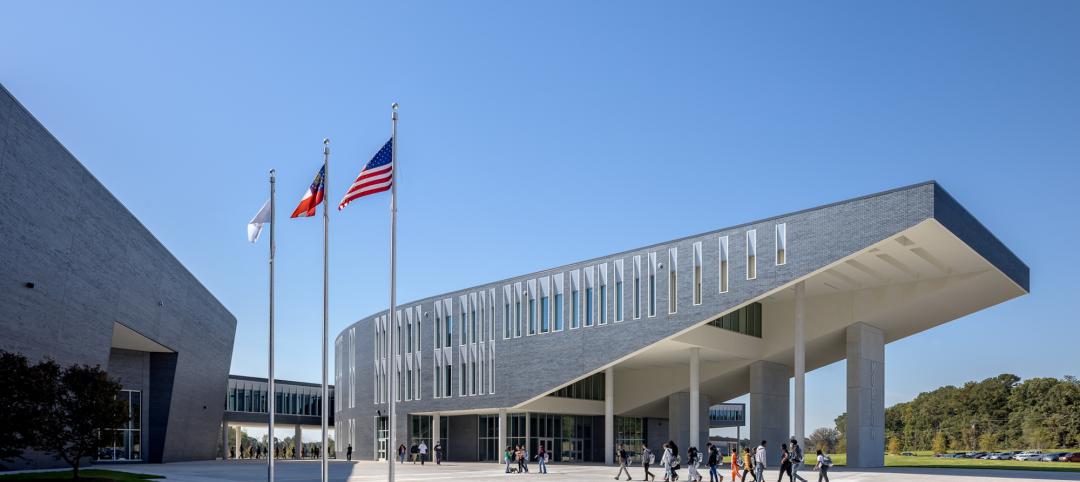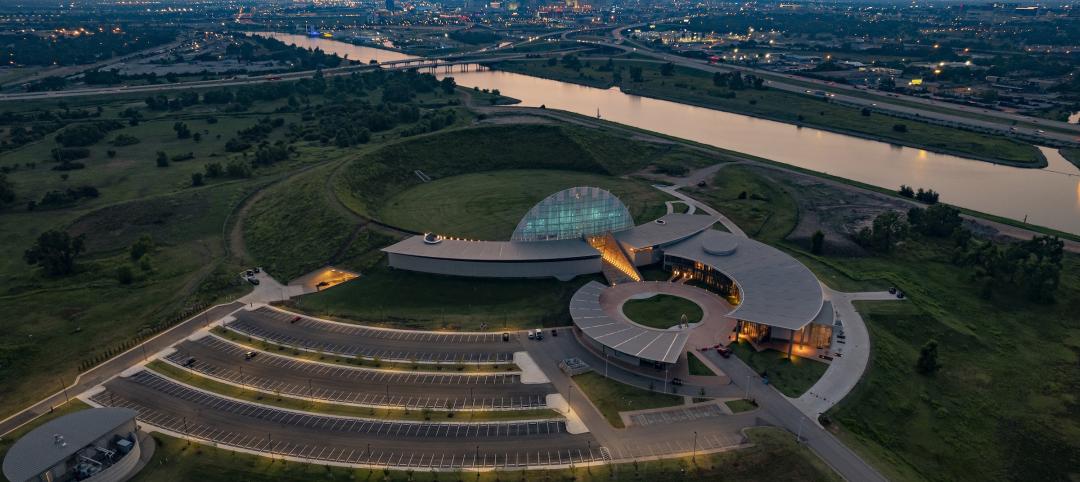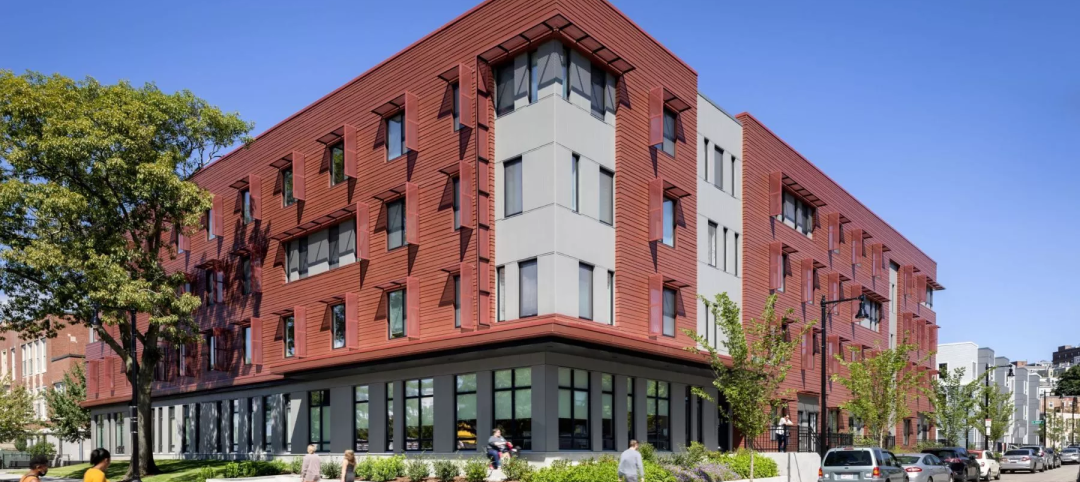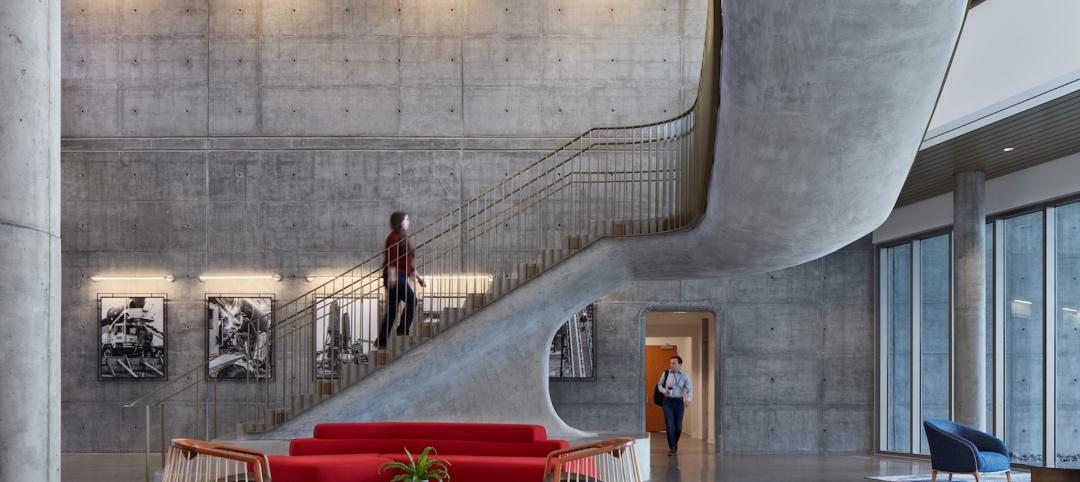Ten years ago, the Regents of the University of California allocated $235 million in bonds (later widened in scope and bumped up to $285 million) to build a replacement hospital on its Irvine campus. The Regents had taken over an existing hospital from Orange County, one that could not be reconstructed to meet California's rigorous SB 1953 seismic requirements. In early 2004, when the bids were opened, the lowest came in a staggering $59 million over budget. This was at a time when prices for steel, concrete, and gypsum board were soaring, MEP engineering firms capable of handling a complex hospital project were not available, and some specialty trades were reporting bid increases of 10-20% a week.
By that summer, the old hospital was being torn down and the site was being cleared, and still no contractor had been hired. At last, in October 2004, Hensel Phelps Construction Co. was awarded the job and given 48 months to deliver a completed building. No matter that the local office of Hensel Phelps had never built a ground-up new hospital (nor, for that matter, had UC Irvine), nor that it intended to do so under design-build—a delivery method that the oversight agency, the Office of State Health Planning and Development (OSHPD), had zero experience with.
Building a relationship with OSHPD
OSHPD has a reputation for being arguably the toughest building authority in the country. The Building Team — Hensel Phelps (GC), HOK (architect), Nabih Youssef Associates (structural engineer), and TMAD-Taylor & Gaines (MEP engineer) — knew that it would have to earn OSHPD's respect and confidence, especially given the agency's trepidation about its first design-build project. At the same time, OSHPD recognized that it had to be open to the concept of design-build or it might not be able to deliver the $41 billion in SB 1953 projects for which it was responsible.
UCI and Hensel Phelps staff started off by holding the fairly customary array of ad hoc field meetings, monthly management meetings, and quarterly executive meetings with OSHPD to review upcoming work and establish priorities.
But the team went much further than that. UCI created the position of "OSHPD Expeditor" to coordinate all OSHPD-related activities—change orders, site visits, etc. The team also pledged to submit only detailed, complete designs with all required backup to OSHPD, provided the agency would reciprocate by meeting review deadlines in timely fashion. To their mutual credit, neither party missed a single deadline over the course of the nearly four-year project.
The university also promised OSHPD that all design packages would be meticulously reviewed by UCI staff before submitting them to OSHPD; to accomplish this, UCI allocated professional architects and engineers to staff the review team. Hensel Phelps appointed a QC manager to make sure submittals were complete and ready prior to inspection requests, and all RFIs were processed by UCI's quality assurance team. UCI found that this "shoulder-to-shoulder QA review" between its professionals and OSHPD staff helped to remove anxieties on OSHPD's part about the accelerated pace of review under design-build.
In yet another effort, UCI paid for extra training for its in-house inspectors of record to become OSHPD-certified Class A inspectors and hired a veteran lead IOR to head its team of five OSHPD-approved inspectors. UCI devised a Web-based inspection request system to enable the Building Team to submit and track inspections online. To maintain continuity and consistency, IOR responsibilities were designated by scope of work, not by location in the building.
For its part, OSHPD made critically important concessions. The agency relaxed pre-qualification requirements for 10 subcontractor trades. Bid documents were streamlined from 58 alternatives to three. Technical submittal requirements were reduced by 70%. The field information and decision-making process with OSHPD was streamlined to reduce risks.
How the Building Team cut $63 million in costs
Hensel Phelps and its partners in the Building Team worked under a "best and final offer" process, which capped the first phase of the hospital and the central plant at a maximum acceptance cost of $250 million. Later, additional scope, including get-ready work for phase two of the hospital, was added to the project, bringing the total acceptance cost to $285 million. In the end, the Building Team brought the job in for $283 million.
Value engineering saved $35 million without jeopardizing the building program. This was accomplished by reducing floor heights from 18 feet to 15 feet and overall building height by seven feet, "diminishing" an iconic tower, and using precast building skin in lieu of stone. Changing the structural system from moment connection to brace frame with gusset plates and exposed braces saved 1,600 tons of steel.
Roof-mounted cooling towers were deleted in favor of air-cooled towers on the ground. Operating room air handlers were placed in the basement instead of in mechanical space on the third floor
Another $28 million was saved through scope reductions (such as eliminating a proposed campus circulation arcade) and deferring certain items — rooftop gardens, an outdoor dining area — to a later phase.
Checks and balances were instituted to make sure the public good was protected. Two independent cost estimators were hired, one to price bid documents and advise if changes were needed in program scope, another to prepare sealed cost estimates to be opened at the time of bid. A third-party general contractor was brought in to review subcontractor bids and provide advice during bid negotiations.
Early in the planning, UCI instituted an integrated project delivery program (now known as "Align 2 Redefine") that led to two significant improvements: the foundation was reconfigured to allow for a basement across the full building footprint; and a 27,000-sf bonus shell space was created for a new radiology department in Phase two.
The project closeout also demonstrated excellent team effort. From the outset, UCI planned for an at-once construction final and certificate of occupancy for the entire hospital—partial occupancy or "staff and stock" approval would not be acceptable.
To meet this requirement, the Building Team, UCI's inspectors, and OSHPD staff sequenced all the inspection activities to a rigorous timetable. OSHPD dispatched six Fire Marshal Academy staff to conduct fire alarm, door contact hardware, stair pressurization, and above-ceiling fire-stopping inspections. A team of 15 was assigned to conduct fire alarm testing over several days.
UC Irvine Douglas Hospital became the first large-scale OSHPD project to finish on time and within budget, in fact, four months early and $2 million below the $285 construction budget. In evaluating this achievement, Rebeka G. Gladson, FAIA, UCI's associate vice chancellor and campus architect, praised Hensel Phelps's "unparalleled ability in the management and delivery of this complex project" and suggested that the relationship between the university and its Building Team be viewed as "a model for the entire industry to replicate." In bestowing Platinum honors on this project, the Building Team Awards jury concurred with this assessment.
PROJECT SUMMARY
Platinum Award
UC Irvine Douglas Hospital at the University of California Irvine Medical Center
Orange, Calif.
Building Team
Submitting entity: University of California, Irvine (owner/developer)
Architect: HOK
Interior architect: Dave Keaggy & Associates
Structural engineer: Nabih Youssef Associates
MEP engineer: TMAD–Taylor & Gaines
General contractor: Hensel Phelps Construction Co.
General Information
Project size: 474,353 sf
Construction cost: $283 million
Construction time: December 2004 to September 2008
Delivery method: Design-build
Related Stories
Healthcare Facilities | Feb 21, 2023
Cleveland's Glick Center hospital anchors neighborhood revitalization
The newly opened MetroHealth Glick Center in Cleveland, a replacement acute care hospital for MetroHealth, is the centerpiece of a neighborhood revitalization. The eleven-story structure is located within a ‘hospital-in-a-park’ setting that will provide a bucolic space to the community where public green space is lacking. It will connect patients, visitors, and staff to the emotional and physical benefits of nature.
Multifamily Housing | Feb 21, 2023
Multifamily housing investors favoring properties in the Sun Belt
Multifamily housing investors are gravitating toward Sun Belt markets with strong job and population growth, according to new research from Yardi Matrix. Despite a sharp second-half slowdown, last year’s nationwide $187 billion transaction volume was the second-highest annual total ever.
Multifamily Housing | Feb 21, 2023
New multifamily housing and mixed-use buildings in Portland, Ore., must be ready for electric vehicle charging
The Portland, Ore., City Council recently voted unanimously to require all new residential and mixed-use buildings to be ready for electric vehicle charging. The move amends Portland’s zoning laws to require all new multi-dwelling and mixed-use development of five or more units with onsite parking to provide electric vehicle charging infrastructure.
K-12 Schools | Feb 18, 2023
Atlanta suburb opens $85 million serpentine-shaped high school designed by Perkins&Will
In Ellenwood, Ga., a southeast suburb of Atlanta, Perkins and Will has partnered with Clayton County Public Schools and MEJA Construction to create a $85 million secondary school. Morrow High School, which opened in fall 2022, serves more than 2,200 students in Clayton County, a community with students from over 30 countries.
Museums | Feb 17, 2023
First Americans Museum uses design metaphors of natural elements to honor native worldview
First Americans Museum (FAM) in Oklahoma City honors the 39 tribes in Oklahoma today, reflecting their history through design metaphors of nature’s elements of earth, wind, water, and fire. The design concept includes multiple circles suggested by arcs, reflecting the native tradition of a circular worldview that encompasses the cycle of life, the seasons, and the rotation of the earth.
Architects | Feb 17, 2023
Architect of the Capitol fired by President Biden after strong bipartisan criticism
Architect of the Capitol J. Brett Blanton was let go this week following alleged abuse of authority, misuse of government property, and wasted taxpayer money.
High-rise Construction | Feb 15, 2023
Bjarke Ingels' 'leaning towers' concept wins Qianhai Prisma Towers design competition
A pair of sloped high-rises—a 300-meter residential tower and a 250-meter office tower—highlight the Qianhai Prisma Towers development in Qianhai, Shenzhen, China. BIG recently won the design competition for the project.
Senior Living Design | Feb 15, 2023
Passive House affordable senior housing project opens in Boston
Work on Phase Three C of The Anne M. Lynch Homes at Old Colony, a 55-apartment midrise building in Boston that stands out for its use of Passive House design principles, was recently completed. Designed by The Architectural Team (TAT), the four-story structure was informed throughout by Passive House principles and standards.
Designers | Feb 13, 2023
Hoffmann Architects + Engineers Establishes Diversity Advancement Scholarship Fund
Hoffmann Architects + Engineers, a design firm specializing in the rehabilitation of building exteriors, contributed $25,000 to fund the Hoffmann Diversity Advancement Scholarship, administered through the Connecticut Architecture Foundation. The fund provides scholarships for students from underrepresented racial or ethnic groups who are seeking degrees in architecture or engineering.
Office Buildings | Feb 12, 2023
Smyrna Ready Mix’s new office HQ mimics the patterns in the company’s onsite stone quarry
Designed by EOA Architects to showcase various concrete processes and applications, Smyrna Ready Mix's new office headquarters features vertical layering that mimics the patterns in the company’s stone quarry, located on the opposite end of the campus site. The building’s glass and concrete bands are meant to mirror the quarry’s natural contours and striations.



